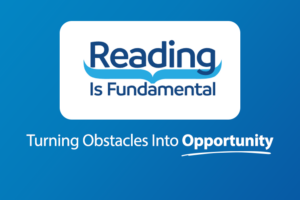Richard Neustedter and Lynne Filderman | January 15, 2014
Why It’s Time to Invest in Performance and Impact
Originally Posted On: CSRwire.com Inspired Giving Series
Instead of focusing on financials, should nonprofits be “charting impact” – a means to tell their story about their vision, accomplishments, effectiveness and impact?
There is much debate, criticism and controversy today regarding performance ratings for non-profits. Many individuals disagree with the focus on financial metrics as a ratings tool. And there is a growing demand to measure charities by their impact. In addition, some individuals want to look at charities more like for-profit companies. All of these viewpoints are worth considering, and together will improve the ability of nonprofit organizations to attract sustainable funding and deliver on their promises.
What makes this possible? Our digital culture has transformed the nonprofit landscape with the immediacy and accessibility of massive amounts of information. It’s the age of the democratization of charity information. Anybody can get information about a charity at any time. Never before in our history has so much information been accessible to so many. You have an almost constant supply of information and demand for news, information, data and stories.
The result is today’s donors, whether individual, corporate or institutional, are more sophisticated in making philanthropic decisions. Donors no longer rely solely on a “feel good” barometer, but also want to know that an organization is worthy of their support and investment. With so much information available, the focus has turned to what impact is an organization making.
Impact—With a Focus on Support and Engagement
There are two pathways of conversation around impact. One is focused on the nonprofit organizations themselves to demonstrate governance, leadership, transparency and impact. The second is focused on the corporate side to have an engaged workforce, smart charitable investments and sustainable social impact.
America’s Charities sees itself at the important nexus of nonprofit performance, donor expectations and workplace giving programs. From supporting corporate social responsibility and employee engagement to increasing the number of individuals who give through payroll deduction—gifts that are five times greater than the average—to the number of values-driven conversations, these efforts are designed to provide a road map to help nonprofits achieve a higher level of performance and help companies demonstrate the impact of their investments.
Our goal is to support charities generate more investments and sustainable revenue by achieving higher levels of performance and demonstrable impact in addressing critical needs.
Who’s Seeking Impact?
Two recent research reports highlight the transformation of donor expectations. The 2013 Cone Communications/Echo Global CSR Study reveals:
“Today’s savvy consumers expect companies to drive positive societal change both inside and outside their workplace walls.”
One of the guiding principles outlined in the report is for companies to “provide ongoing and transparent proof of individual and collective impact.” Furthermore, “to foster and maintain trust and deep engagement, companies must communicate not only the extent to which corporate commitments to cause are having traction, but also specifically how consumer participation, from dollars donated to hours volunteered, will create measurable impact.”
And, this demand is not going away. The next generation of donors and philanthropists known as Millennials are at the forefront of seeking impact.
The 2013 Millennial Impact Report from The Case Foundation highlights the same theme:
“Millennials are consistent in their desire to see how dollars translate into people helped. They want their contributions, no matter the type or amount, to help achieve tangible results for a cause.”
To better understand the transformation of donor expectations, we’d like to borrow a phrase we first heard from Bob Ottenhoff, former CEO of GuideStar and now CEO of Center for Disaster Philanthropy – ‘the age of assumed virtue for charities is gone’. This fundamental shift places the onus squarely on nonprofit organizations to find ways to demonstrate they are performing efficiently and effectively, they are accomplishing the goals and have measurable outcomes and, thus, they are worthy of donor investments.
Corporate social responsibility also means more than writing a check. As Alison DaSilva of Cone Communications said in her recent CSRwire Talkback blog,
“Today’s savvy consumers expect companies to drive positive societal change both inside and outside their corporate walls, from developing new products and partnerships to instituting operational changes.”
In July 2013, GuideStar (GS), Better Business Bureau Wise Giving Alliance (BBB) and Charity Navigator (CN) launched the Overhead Myth Initiative and published an open letter to put an end to evaluating charities by their ‘overhead ratio’:
“The experts have spoken: the percent of charity expenses that goes to administrative costs—commonly referred to as ‘overhead’—is a poor measure of a charity’s performance.”
This initiative is designed to shine a light on the ‘overhead myth’ of viewing a charity through the very narrow lens of their overhead and administrative costs and “correct the common misconception that the percentage of charity’s expenses that go to administrative and fundraising costs—commonly referred to as ‘overhead’—is, on its own, an appropriate metric to evaluate when assessing a charity’s worthiness and efficiency.”
GS, BBB and CN want to ensure nonprofits have the resources needed to invest in their own sustainability and success, and recommend that donors to look at these other four factors of performance when considering which charities to support – transparency, governance, leadership and results.
Charting Impact: A Charity Impact Tool
As nonprofits are being asked to demonstrate their impact, individual, corporate and institutional donors now have a tool to examine the impact of their investments by seeing how their dollars are helping nonprofits carry out their missions, see their accomplishments and measure effectiveness.
GS, BBB and Independent Sector (IS) launched Charting Impact (CI) – a means for charities to tell their all-important story about their vision, accomplishments, effectiveness and impact. This process demands strategic focus and board engagement in a self-evaluation process by answering five key questions.
The five Charting Impact questions are:
- What is your organization aiming to accomplish?
- What are your strategies for making this happen?
- What are your organization’s capabilities for doing this?
- How will your organization know if you are making progress?
- What have and haven’t you accomplished so far?
CI is described as “common format to convey your organization’s contributions to advancing the common good will:
- Encourage people to invest their money, time, and attention in effective organizations;
- Highlight the difference your organization makes;
- Sharpen your approaches; and
- Position your organization to work with and learn from others.”
Between a starting point and the end goal, there are many milestones along the way. Establish success indicators at the outset of program development – and communicate them, warts and all, transparently social-impact and consistently. Ensure stakeholders understand how they’re individually contributing to the larger task at-hand, as well as how collective efforts are achieving progress.
Take a look at Dan Pallotta’s TED Talk: “The Way We Think About Charity is Dead Wrong.” Since March 2013, it has over 2.6 million views. The conversation is gaining momentum and a collective voice is gathering strength.
As nonprofits begin to understand that investing time and resources to meet BBB’s standards, obtain a respectable CN rating and develop the strategic and outcome focus of CI, they face an additional challenge since donor investment relies largely on two subjective factors – emotional connection and disposable income.
Measuring either of these specific drivers is difficult. Unlike for-profit organizations, which provide a tangible feature/benefit equation, charities are challenged to meet more personalized criteria for investment. Utilizing a common set of tools and language will provide the highest opportunity for success, and should be a key strategic factor for developing sustainable investment in their mission.
To maximize success, charities should use ratings as a means of promoting good stewardship of donors’ dollars and ensuring their public image adheres to standards of transparency and accountability with demonstrable impact and outcomes. This will attract donors and, possibly more importantly, assure you do not lose donors due to bad ratings or publicity.
The challenge for each organization is to understand the operational requirements needed to manage the ratings and how it integrates with an impact narrative. Good governance, which includes providing all the tools needed for success, should incorporate strategic objectives specifically designed to enhance accountability, transparency and effectiveness. This will allow the organization to focus on impact by telling your story instead of defending how funds are used.
As companies are being asked to demonstrate the impact of their investments and charities are being asked to demonstrate their impact, operate with good governance, be transparent in their operations and be leaders in transforming society, it’s time to help donors understand what they are being asked to look for.
As Jacob Herald, GS CEO says,
“It’s time to retire the overhead ratio in favor of a multidimensional, impact-oriented framework to achieve what really matters: getting more money to the best performing organizations.”
As you consider your year-end giving, now is a good time to focus on making a real impact by focusing on transparency, governance, leadership, strategy, measurement and results.
Get Resources and Insights Straight To Your Inbox
Explore More Articles
Workplace Fundraising + Volunteering Summit (April 2nd and 3rd, 2025)
Join us in attending this virtual summit! The America’s Charities team is joining up with other leading voices in the workplace giving space for a…
Read ArticleThe Time to Act is Now
The results of the 2024 National Assessment of Educational Progress (NAEP) are in, and the findings are, in a word, heartbreaking. This assessment serves as…
Read ArticleOpen Position: Non-Profit Account Manager, Employee Assistance Funds & Scholarships (Remote – Full Time)
We are professional, agile, customer-centric and our goal is to inspire employees and organizations to support causes they care about. We help nonprofits fundraise unrestricted,…
Read ArticleGet Resources and Insights Straight To Your Inbox
Receive our monthly/bi-monthly newsletter filled with information about causes, nonprofit impact, and topics important for corporate social responsibility and employee engagement professionals, including disaster response, workplace giving, matching gifts, employee assistance funds, volunteering, scholarship award program management, grantmaking, and other philanthropic initiatives.




